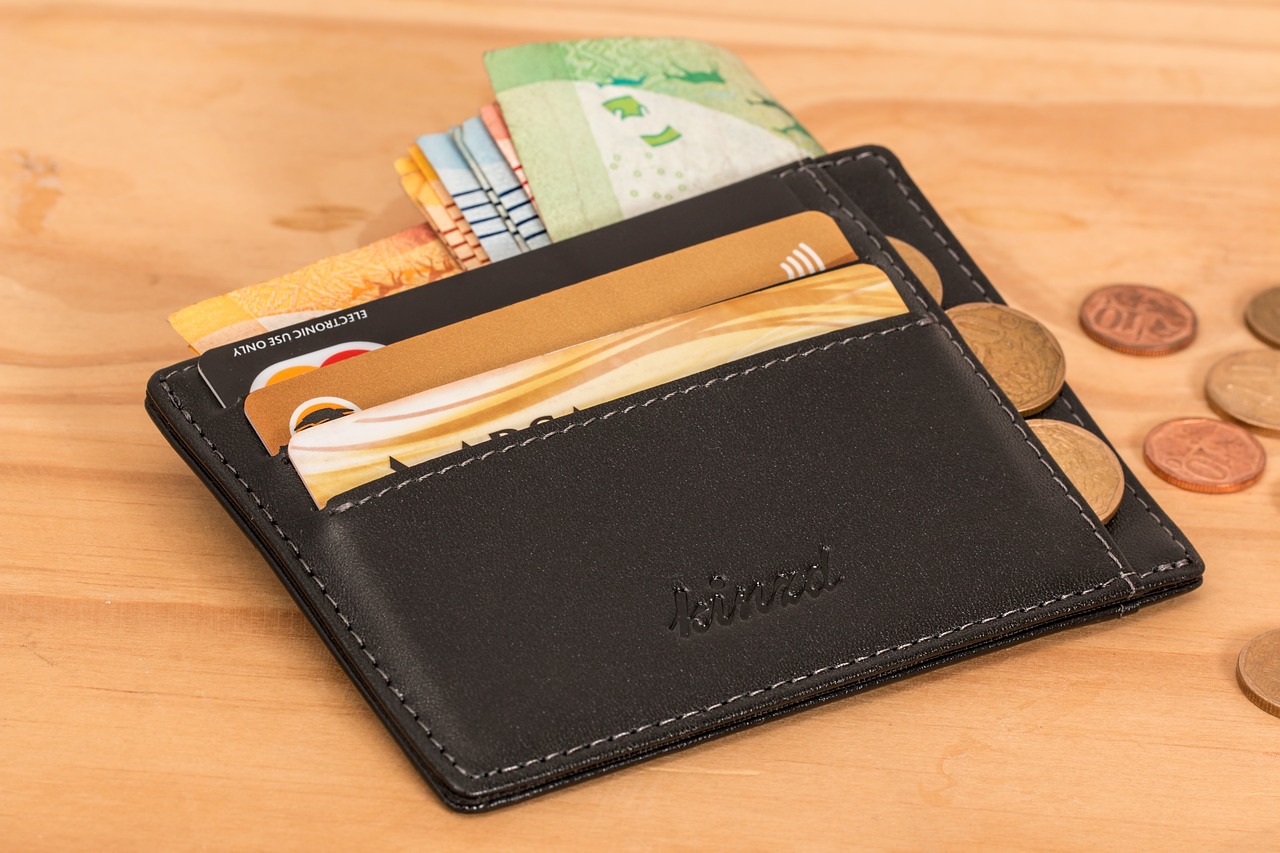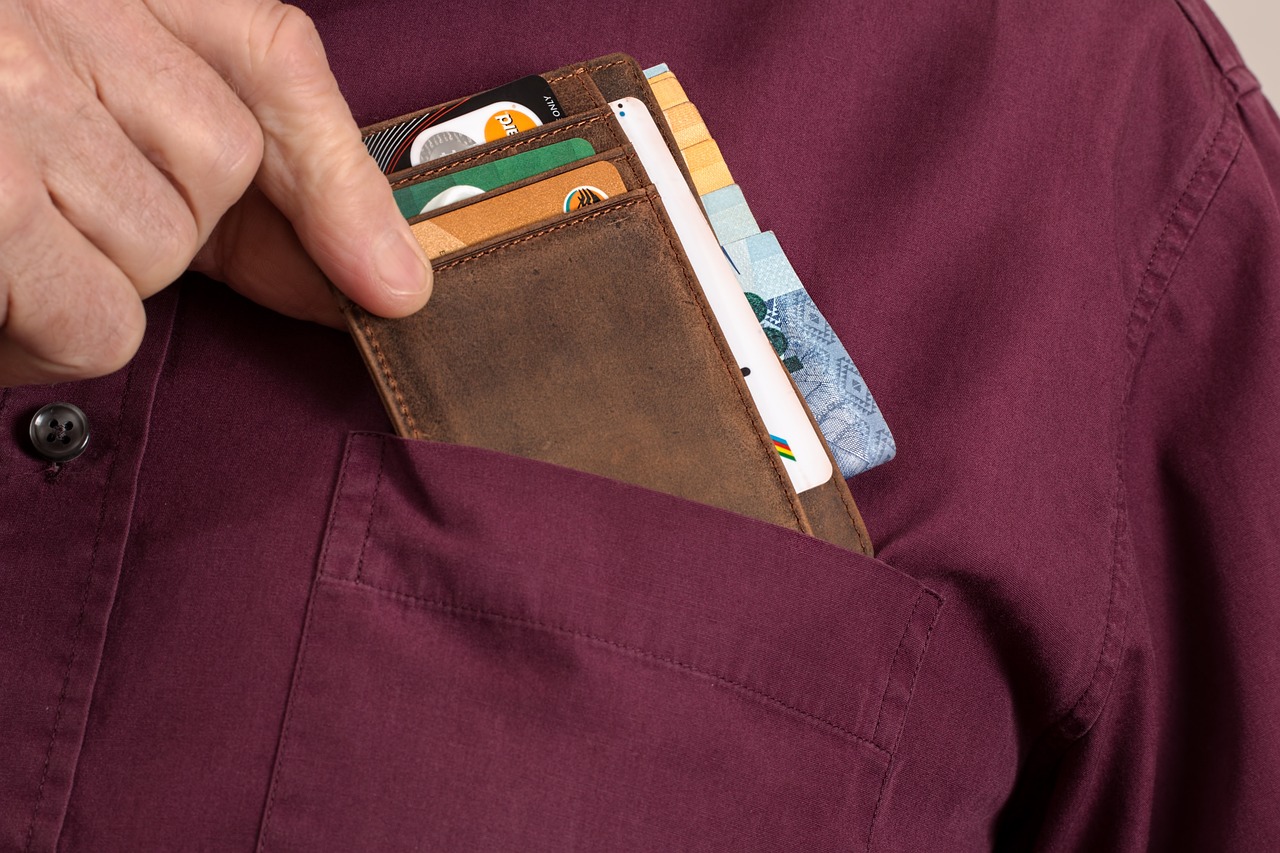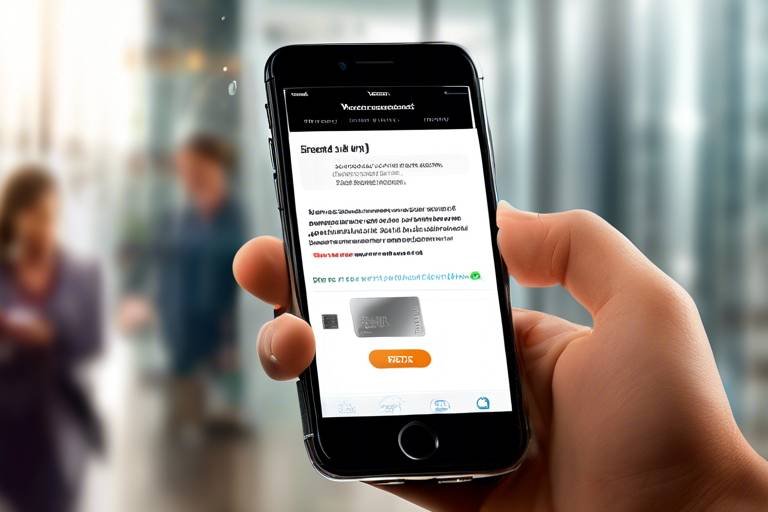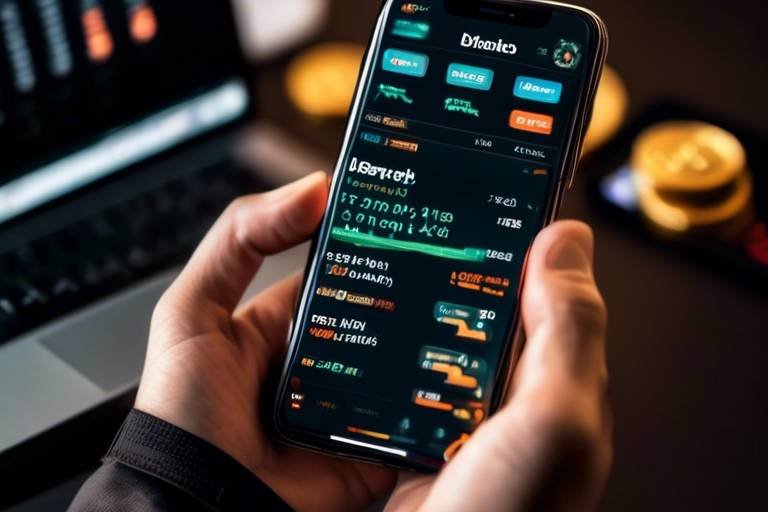How to Stay Ahead in Wallet Technology Trends
In today’s fast-paced digital world, staying ahead in wallet technology trends is not just a luxury; it’s a necessity. As consumers increasingly shift towards digital solutions for their financial transactions, understanding the nuances of these technologies can provide a significant edge. Imagine walking into a store, and with just a tap of your phone, your purchase is completed in seconds. This is the reality that digital wallets bring, and it’s evolving at lightning speed. But how can you leverage these advancements for personal and business growth? Let's dive into the latest trends, innovations, and strategies that will keep you at the forefront of this dynamic landscape.
Digital wallets, often referred to as e-wallets, have completely transformed how we manage our finances. They allow users to store payment information, loyalty cards, and even cryptocurrencies all in one place, accessible with just a few taps on a smartphone. The functionality of these wallets is rooted in advanced technology, including encryption and cloud storage, which ensures that your data remains secure while being readily available. The benefits are numerous: from convenience and speed to enhanced security features that traditional wallets simply can’t offer. As we explore further, it’s essential to grasp how these digital tools work and what they mean for the future of finance.
The landscape of payment technologies is evolving rapidly, reshaping how wallets function. Innovations like contactless payments, cryptocurrencies, and biometric authentication are not just trends; they are becoming standard practices. For instance, contactless payments have surged in popularity due to their convenience, allowing users to make transactions without physically swiping a card. Cryptocurrencies are also making waves, as more merchants begin to accept them, and digital wallets integrate these currencies into their platforms. Biometric authentication, such as fingerprint scanning and facial recognition, enhances security and user experience, making transactions safer and faster. These technologies are not just enhancing user convenience; they are also creating new opportunities for businesses to engage with customers in innovative ways.
As cryptocurrencies gain traction, integrating them into digital wallets is becoming essential. This integration presents both challenges and opportunities. On one hand, the volatility of cryptocurrencies can deter users from adopting them for everyday transactions. On the other hand, the potential for high returns and the growing acceptance of cryptocurrencies by mainstream businesses offer significant incentives. Wallet providers need to navigate these waters carefully, ensuring that they offer a user-friendly experience while providing robust educational resources for users unfamiliar with cryptocurrency. The future of digital transactions may very well hinge on how effectively wallets can incorporate these digital currencies.
Security is paramount in the realm of digital wallets. With the rise of cryptocurrency transactions, the need for advanced security measures has never been more critical. Wallet providers are implementing various strategies to safeguard user data and transactions. These include:
- Two-Factor Authentication (2FA): Adding an extra layer of security by requiring a second form of verification.
- Encryption: Protecting data through complex algorithms to prevent unauthorized access.
- Regular Security Audits: Conducting frequent assessments to identify and mitigate vulnerabilities.
By prioritizing security, wallet providers can build trust with their users, ensuring that they feel safe while managing their finances digitally.
Improving user experience is crucial for the success of cryptocurrency wallets. A seamless interface, intuitive navigation, and responsive design can significantly enhance the overall user experience. Wallets that prioritize user feedback and continuously iterate on their designs can create a more engaging and user-friendly environment. Features like instant transaction notifications, easy-to-read dashboards, and customizable settings can make cryptocurrency transactions more accessible and enjoyable for users. Ultimately, a positive user experience can lead to increased adoption and customer loyalty.
Contactless payment solutions are increasingly popular in the wallet sector. The technology behind these payments, such as NFC (Near Field Communication), allows users to make transactions quickly and without physical contact. This convenience has led to a surge in adoption among consumers, especially in the wake of the global pandemic, where minimizing contact has become a priority. Businesses that embrace contactless payment options can attract more customers and streamline their checkout processes, enhancing overall operational efficiency.
Navigating the regulatory landscape is vital for wallet technology. As digital wallets become more prevalent, governments around the world are establishing regulations to protect consumers and ensure fair practices. Businesses must stay informed about these regulations to avoid potential pitfalls. Compliance is not just about following the rules; it’s also about building trust with users. By demonstrating a commitment to regulatory standards, wallet providers can foster a sense of security among their customers.
Understanding global compliance standards is essential for wallet providers. Different regions have varying regulations that impact how digital wallets operate. For example, the European Union has stringent data protection laws, while the U.S. has a more fragmented regulatory environment. Wallet providers must tailor their operations to meet these diverse requirements, ensuring they remain compliant while still delivering a superior user experience. This adaptability can set successful wallet providers apart from their competitors.
The future of digital wallets looks promising with ongoing advancements. As technology continues to evolve, we can expect to see even more innovative features that enhance security, usability, and integration with other financial services. From AI-driven customer support to further integration of blockchain technology, the possibilities are endless. Wallet providers that stay ahead of these trends will not only meet consumer demands but also shape the future of digital finance.
Q: What are digital wallets?
A: Digital wallets are applications that allow users to store payment information, loyalty cards, and cryptocurrencies securely on their devices.
Q: How do contactless payments work?
A: Contactless payments use NFC technology to allow users to make transactions by simply tapping their devices on a payment terminal.
Q: What security measures should I look for in a digital wallet?
A: Look for features like two-factor authentication, encryption, and regular security audits to ensure your data is protected.
Q: Can I use cryptocurrencies in digital wallets?
A: Yes, many digital wallets now support cryptocurrencies, allowing users to buy, sell, and store them alongside traditional currencies.

Understanding Digital Wallets
Digital wallets have truly revolutionized the way we manage our finances. Gone are the days of fumbling through our pockets for loose change or struggling to remember where we stashed our credit cards. A digital wallet, often referred to as an e-wallet, allows users to store their payment information securely on their smartphones or computers, making transactions as easy as a few taps on a screen. But how do they actually work? Let's break it down.
At their core, digital wallets utilize a combination of software, hardware, and network connections to facilitate seamless transactions. They store various types of payment information, including credit and debit card details, bank account information, and even loyalty cards. When you make a purchase, your digital wallet communicates with the merchant's payment processor, securely transmitting your payment information. This process is typically encrypted, ensuring that your sensitive data remains protected.
One of the primary benefits of digital wallets is their convenience. Imagine walking into a store, grabbing what you need, and simply tapping your phone or smartwatch to pay. No more waiting in long lines or dealing with cash. This level of ease is particularly appealing in our fast-paced world, where time is of the essence. Moreover, digital wallets often come with additional features that enhance user experience:
- Transaction history: Easy access to past transactions helps users keep track of their spending.
- Budgeting tools: Many wallets offer built-in budgeting features to help users manage their finances better.
- Loyalty rewards: Some wallets allow users to store and redeem loyalty points, making it easier to benefit from rewards programs.
But the advantages don’t stop there. Digital wallets also provide a layer of security that traditional wallets simply can’t match. With features like biometric authentication (think fingerprint or facial recognition) and two-factor authentication, users can feel more secure knowing their financial information is safeguarded against unauthorized access. Additionally, in the unfortunate event of a lost or stolen device, digital wallets can often be remotely disabled, providing peace of mind.
As we delve deeper into the world of digital wallets, it’s essential to understand the technology behind them. Most digital wallets rely on Near Field Communication (NFC) technology, which allows devices to communicate wirelessly over short distances. This is what enables contactless payments, where you can simply tap your device to a payment terminal. Furthermore, the rise of blockchain technology is paving the way for more advanced digital wallets that can handle cryptocurrencies, offering even more options for users.
In summary, digital wallets are not just a passing trend; they represent a fundamental shift in how we handle money. They combine convenience, security, and innovation to create a user-friendly experience that is here to stay. As we move forward, staying informed about the latest developments in this space will be critical for both personal and business growth.
Q: What is a digital wallet?
A: A digital wallet is a software application that allows users to store payment information and make transactions electronically, often using a smartphone or computer.
Q: Are digital wallets safe?
A: Yes, digital wallets typically employ advanced security measures, including encryption and biometric authentication, to protect user data.
Q: Can I use a digital wallet for cryptocurrency?
A: Many digital wallets are now integrated with cryptocurrency functionality, allowing users to store and manage digital currencies.

Emerging Payment Technologies
New payment technologies are constantly emerging, reshaping the wallet landscape in ways we could only dream of a decade ago. Imagine a world where carrying cash is as outdated as using a rotary phone! Digital wallets are at the forefront of this revolution, allowing us to conduct transactions at lightning speed with just a tap or a swipe. Whether you're grabbing a coffee or paying for your groceries, these innovations are designed to make our lives easier and more efficient.
One of the most exciting developments in this space is contactless payments. This technology allows users to make transactions by simply waving their smartphones or contactless cards near a payment terminal. It’s like magic! But what's the secret behind this seamless experience? The underlying technology, known as Near Field Communication (NFC), enables devices to communicate when they are within a few centimeters of each other. This has not only sped up the checkout process but has also enhanced the overall shopping experience.
Moreover, we can't ignore the rise of cryptocurrencies. As digital currencies like Bitcoin and Ethereum gain traction, integrating them into digital wallets is becoming essential. Imagine having your cash, credit cards, and cryptocurrencies all in one place! This integration presents both challenges and opportunities for users and businesses alike. While the volatility of cryptocurrencies can be daunting, the potential for lower transaction fees and increased security is enticing. It’s like having a treasure chest where the value can fluctuate, but the possibilities are endless!
Another emerging trend is the use of biometric authentication. Forget about remembering passwords or PINs! With biometric technology, users can authenticate transactions using their unique biological traits, such as fingerprints or facial recognition. This not only enhances security but also simplifies the user experience. Imagine walking into a store, picking up your items, and simply smiling at the checkout terminal to pay. It’s convenient, fast, and incredibly futuristic!
In addition to these advancements, the wallet technology landscape is also seeing a rise in mobile payment apps. These apps allow users to link their bank accounts, credit cards, and even loyalty programs, making it easier than ever to manage finances. With features like budgeting tools and spending insights, mobile payment apps are not just about transactions; they’re about empowering users to take control of their financial lives. It's like having a personal finance assistant in your pocket!
As we look ahead, it's clear that the integration of these emerging payment technologies will continue to evolve. Businesses that adapt to these changes will not only enhance customer satisfaction but also gain a competitive edge in the market. The future of wallet technology is bright, and those who embrace these innovations will be well-positioned to thrive in the digital finance landscape.
- What are contactless payments? Contactless payments allow users to make transactions by simply tapping their card or smartphone near a payment terminal.
- How do cryptocurrencies work in digital wallets? Cryptocurrencies can be stored in digital wallets, allowing users to buy, sell, and trade them easily.
- Is biometric authentication secure? Yes, biometric authentication is considered to be highly secure as it uses unique biological traits for verification.
- What is the benefit of using mobile payment apps? Mobile payment apps streamline transactions and provide budgeting tools, helping users manage their finances more effectively.

Cryptocurrency Integration
As we navigate through the digital finance landscape, the integration of cryptocurrencies into digital wallets is becoming not just a trend but a necessity. Imagine a world where your wallet holds not just your cash but also your Bitcoin, Ethereum, and other digital assets. This integration is reshaping how we perceive value and transact. However, with this exciting opportunity comes a set of challenges that both users and developers must address.
One of the primary challenges is the volatility associated with cryptocurrencies. Unlike traditional currencies, which have relatively stable values, cryptocurrencies can fluctuate wildly in a short period. This unpredictability can create confusion and hesitation among users who are accustomed to the stability of fiat money. Moreover, the lack of understanding around how these digital currencies work can lead to skepticism. Therefore, educating users on the benefits and risks of cryptocurrency is essential for wider adoption.
On the flip side, integrating cryptocurrencies into digital wallets opens up a treasure trove of opportunities. For businesses, this means tapping into a growing market of crypto enthusiasts who prefer to transact using their digital assets. Additionally, it allows for borderless transactions, making it easier for people to send and receive money globally without the hefty fees associated with traditional banking systems. This is particularly beneficial for freelancers and businesses operating in different countries.
To facilitate this integration effectively, developers are focusing on enhancing the user experience. This includes creating intuitive interfaces that simplify the process of buying, selling, and exchanging cryptocurrencies. Furthermore, incorporating educational tools within wallets can help demystify the cryptocurrency space for users. Imagine a wallet that not only allows you to transact but also offers tips and tutorials on how to manage your digital assets wisely.
Security is another crucial aspect of cryptocurrency integration. Users need assurance that their investments are safe from cyber threats. Wallet providers are implementing advanced security measures such as two-factor authentication, biometric verification, and end-to-end encryption to protect users' funds. By prioritizing security, wallet developers can build trust and encourage more users to embrace cryptocurrency.
In summary, the integration of cryptocurrencies into digital wallets is a double-edged sword. While it presents challenges such as volatility and security concerns, it also offers exciting opportunities for innovation and growth. As we continue to explore this evolving landscape, staying informed and adaptable will be key to leveraging the full potential of cryptocurrency in our digital wallets.
- What are the main benefits of integrating cryptocurrencies into digital wallets?
Integrating cryptocurrencies provides users with greater flexibility, the ability to make borderless transactions, and access to a growing market of digital assets.
- How can I ensure the security of my cryptocurrency transactions?
Utilize wallets that incorporate advanced security measures such as two-factor authentication and biometric verification.
- What should I consider before using cryptocurrencies?
Consider the volatility of cryptocurrencies, your understanding of how they work, and the security features of the wallet you choose.

Security Considerations
In the world of digital wallets, security is not just a feature; it’s a necessity. As we embrace the convenience of managing our finances through these innovative platforms, we must also recognize the potential risks that come with them. Digital wallets store sensitive information, including credit card details, bank account numbers, and even personal identification. Therefore, understanding the security measures available is crucial for both users and developers alike.
One of the primary concerns when it comes to digital wallets is the threat of fraud and hacking. Cybercriminals are constantly evolving their tactics, making it essential for wallet providers to stay one step ahead. This is where technologies like encryption and two-factor authentication (2FA) come into play. Encryption works by converting the user’s data into a code that can only be decrypted by authorized parties, while 2FA adds an extra layer of security by requiring a second form of verification, such as a text message or email code, before granting access to the wallet.
Moreover, biometric authentication is gaining traction as a security measure in digital wallets. This technology uses unique biological traits, such as fingerprints or facial recognition, to verify a user’s identity. It’s not only more secure but also offers a seamless user experience. Imagine simply tapping your finger or glancing at your phone to make a payment—easy, right?
However, even with advanced security features, users must remain vigilant. Here are some tips to enhance your security when using digital wallets:
- Regularly update your software: Ensure that your wallet app is always up to date to benefit from the latest security patches.
- Use strong, unique passwords: Avoid using easily guessable passwords and consider using a password manager to keep track of them.
- Monitor your transactions: Keep an eye on your transaction history and report any suspicious activity immediately.
In addition to these measures, wallet providers are also focusing on implementing robust security protocols. For instance, many are adopting blockchain technology for transaction verification. Blockchain offers a decentralized ledger system that enhances transparency and reduces the risk of fraud. Each transaction is recorded in a block and linked to the previous one, making it nearly impossible for hackers to alter the data without being detected.
As we look to the future, it’s clear that security will continue to be a top priority in the evolution of digital wallets. With the rise of cryptocurrencies and the increasing amount of financial data being processed online, the need for enhanced security measures will only grow. Wallet providers must invest in cutting-edge technologies and continually educate users about best practices to protect their financial information.
In conclusion, while digital wallets offer unparalleled convenience, they also come with responsibilities. By understanding the security considerations and taking proactive steps, users can enjoy the benefits of digital wallets while minimizing the risks. The key takeaway? Stay informed, stay secure, and embrace the digital finance revolution with confidence.
Q1: What is the safest way to store my digital wallet information?
A1: The safest way is to use a reputable digital wallet that employs strong encryption and two-factor authentication. Additionally, avoid storing sensitive information on unsecured devices.
Q2: Can I recover my funds if my digital wallet is hacked?
A2: Recovery depends on the wallet provider’s policies. Many offer recovery options, but it’s crucial to act quickly and report any suspicious activity as soon as possible.
Q3: Is biometric authentication foolproof?
A3: While biometric authentication is highly secure, no system is entirely foolproof. It’s best used in conjunction with other security measures for maximum protection.

User Experience Enhancements
In the fast-paced world of digital wallets, user experience (UX) is not just a luxury; it's a necessity. As more people turn to digital wallets for their everyday transactions, the demand for intuitive and engaging interfaces has skyrocketed. Imagine trying to navigate a maze without a map – that's how frustrating a poorly designed wallet can feel to users. To keep pace with user expectations, wallet developers are focusing on several key enhancements that can significantly improve the overall experience.
First and foremost, streamlined interfaces are crucial. Users want to complete transactions quickly and effortlessly. A cluttered screen filled with unnecessary options can lead to confusion and frustration. By simplifying the design and focusing on essential features, wallet providers can create a more engaging experience. For instance, a well-organized dashboard that highlights recent transactions, balances, and quick access to payment options can make a world of difference.
Furthermore, incorporating personalization features can elevate user satisfaction. Imagine a wallet that remembers your favorite stores or frequently used payment methods. This level of customization not only saves time but also makes users feel valued. Wallets that utilize artificial intelligence to learn user preferences can suggest tailored offers or even alert users about special deals, enhancing the overall value of the wallet.
Another vital aspect is mobile optimization. With the majority of transactions occurring on smartphones, ensuring that digital wallets are fully optimized for mobile devices is essential. This means not just a responsive design but also features like one-touch payments and easy navigation. Users should be able to complete a transaction with minimal effort, ideally within just a few taps. The less time spent fumbling through options, the better the experience.
Security also plays a significant role in user experience. Users need to feel safe when using digital wallets, especially when it comes to sensitive information and financial transactions. Implementing robust security measures such as biometric authentication and two-factor authentication can enhance user confidence. When users know their data is protected, they are more likely to engage with the wallet regularly.
Lastly, providing real-time support can significantly improve user satisfaction. Whether it's through chatbots, in-app messaging, or a dedicated support line, having access to help when issues arise can prevent frustration and build trust. Users appreciate knowing that assistance is just a click away, especially in moments of urgency.
In conclusion, enhancing user experience in digital wallets is about creating a seamless, secure, and personalized environment. By focusing on streamlined interfaces, personalization, mobile optimization, robust security, and real-time support, wallet providers can ensure they not only meet but exceed user expectations. After all, in the world of digital finance, a happy user is a loyal user.
- What are the key features to look for in a digital wallet? Look for user-friendly interfaces, strong security measures, and personalization options.
- How can I ensure my digital wallet is secure? Use wallets that offer biometric authentication and two-factor authentication for added security.
- Are digital wallets easy to use on mobile devices? Yes, most digital wallets are optimized for mobile use, allowing for quick and easy transactions.
- Can digital wallets help me save money? Many wallets offer personalized deals and cash-back options, which can help you save on purchases.

Contactless Payment Solutions
In today’s fast-paced world, have emerged as a game changer in the financial landscape. Imagine walking into a store, grabbing your favorite coffee, and simply waving your smartphone or card over a terminal without the hassle of fumbling for cash or even inserting your card. This convenience is not just a luxury; it's becoming a norm that caters to our increasingly busy lifestyles. But what exactly makes contactless payments so appealing, and how do they work?
At its core, contactless payment technology utilizes Near Field Communication (NFC) and Radio Frequency Identification (RFID) to enable transactions. This allows devices to communicate with payment terminals securely and quickly. Users can make purchases by bringing their card or mobile device close to a reader, which then processes the payment almost instantaneously. This swift transaction process not only saves time but also enhances customer satisfaction, making it a win-win for both consumers and businesses.
Moreover, the adoption of contactless payments is on the rise globally. According to recent studies, the number of contactless transactions has surged, with many consumers preferring this method over traditional payment options. Here are some reasons why:
- Speed: Transactions are completed in seconds, reducing waiting times at checkout.
- Convenience: No need to carry cash or cards; your smartphone can do it all.
- Enhanced Security: Contactless payments often come with advanced encryption, making them more secure than traditional methods.
As businesses adapt to these trends, they are also discovering that integrating contactless payment solutions can lead to increased sales. Customers are more likely to spend when the payment process is seamless and quick. A study showed that merchants who adopted contactless payments experienced a 20% increase in transaction volume compared to those who did not. This statistic alone highlights the potential for growth in adopting such technologies.
However, it’s essential to note that while the benefits are substantial, there are challenges to consider. For instance, not all consumers are familiar with contactless payment technology, and some may have concerns about security and privacy. Businesses need to educate their customers about how these systems work and the measures in place to protect their information. Transparency builds trust, and trust is crucial in the financial realm.
As we look ahead, the future of contactless payment solutions seems bright. With the rise of mobile wallets like Apple Pay, Google Pay, and others, the integration of contactless payments into everyday transactions will only continue to grow. Additionally, innovations such as biometric authentication—like fingerprint scanning or facial recognition—are being implemented to enhance security even further, ensuring that users feel safe while enjoying the convenience of contactless payments.
In summary, contactless payment solutions are not just a passing trend; they are a fundamental shift in how we transact. As technology continues to evolve, embracing these changes will be crucial for both consumers and businesses alike. By understanding and adapting to this new landscape, we can ensure that we are not just keeping up with the times but staying ahead of the curve.

Regulatory Challenges
In the rapidly evolving world of digital wallets, play a crucial role in shaping how these technologies develop and operate. As more people and businesses adopt digital wallets, regulators are stepping in to ensure that the systems are secure, reliable, and compliant with existing financial laws. This can often feel like navigating a maze, where one wrong turn could lead to hefty fines or even a shutdown of services. But why is this so important? Well, without proper regulations, users could face significant risks, including fraud, data breaches, and even loss of funds.
One of the major hurdles is the diversity of regulations across different regions. For instance, what works in the United States may not be applicable in Europe or Asia. Each region has its own set of rules regarding data protection, anti-money laundering (AML), and know your customer (KYC) policies. This creates a complex landscape for wallet providers who must ensure compliance in every market they operate. In fact, many companies find themselves investing significant resources into legal teams just to keep up with the ever-changing regulations.
Moreover, the pace at which technology evolves often outstrips the speed of regulatory updates. For example, innovations like blockchain and cryptocurrencies challenge traditional financial systems, leading to a lag in regulatory frameworks. As a result, many businesses are left in a state of uncertainty, unsure of how to proceed without risking penalties. To illustrate this point, consider the following table that outlines some key regulations affecting digital wallets in different regions:
| Region | Key Regulation | Impact on Wallet Providers |
|---|---|---|
| United States | Bank Secrecy Act | Requires AML compliance and customer verification |
| European Union | General Data Protection Regulation (GDPR) | Mandates strict data protection and privacy measures |
| Asia | Various national laws | Regulations differ significantly by country, creating inconsistency |
To further complicate matters, the rise of decentralized finance (DeFi) platforms is pushing the boundaries of traditional regulatory frameworks. These platforms operate without intermediaries, making it difficult for regulators to enforce compliance. As a result, many digital wallet providers are adopting a proactive approach by collaborating with regulators to develop standards that ensure safety while still fostering innovation. This partnership could pave the way for a more stable regulatory environment, but it requires a delicate balance between oversight and freedom.
In conclusion, navigating the regulatory landscape is not just a challenge; it’s a necessity for the survival and growth of digital wallet technologies. Companies that can adapt to these regulations will not only protect themselves from potential pitfalls but also build trust with their users. After all, in the world of finance, trust is everything. Are you ready to embrace the regulatory challenges ahead?
- What are the main regulatory challenges facing digital wallets?
Digital wallets face challenges such as compliance with AML and KYC regulations, data protection laws, and the need to adapt to varying regulations across different regions. - How do regulations impact the user experience of digital wallets?
Regulations can lead to additional verification steps, which might complicate the user experience, but they are essential for ensuring security and trust. - Can digital wallet providers influence regulatory changes?
Yes, many providers are actively engaging with regulators to create a balanced framework that promotes innovation while ensuring user safety.

Global Compliance Standards
Understanding is essential for any business operating in the wallet technology landscape. As digital wallets gain popularity, regulatory bodies worldwide are stepping up to create frameworks that ensure consumer protection, data privacy, and financial security. Imagine navigating a maze where every turn represents a different region's regulations; this is the reality for wallet providers. Each country has its own set of rules, and failing to comply can lead to hefty fines or even a ban from operating in that market.
For instance, in the European Union, the General Data Protection Regulation (GDPR) mandates strict guidelines on how companies handle personal data. This means that digital wallet providers must implement robust data protection measures to ensure user information is safe from breaches. Similarly, in the United States, the Payment Card Industry Data Security Standard (PCI DSS) sets forth requirements for organizations that handle credit card information, emphasizing the need for secure systems to protect against fraud.
To give you a clearer picture, let's take a look at some key compliance standards across various regions:
| Region | Compliance Standard | Focus Area |
|---|---|---|
| European Union | GDPR | Data Protection and Privacy |
| United States | PCI DSS | Payment Security |
| Australia | Australian Privacy Principles (APPs) | Data Privacy |
| Canada | Personal Information Protection and Electronic Documents Act (PIPEDA) | Data Protection |
As you can see, each region has its own compliance frameworks, and wallet providers must stay informed about these regulations to avoid pitfalls. Additionally, businesses need to be proactive in adapting their technologies to meet these standards. This often involves investing in security technologies, conducting regular audits, and training staff on compliance protocols. Think of it as building a fortress; the stronger the walls (compliance measures), the safer the treasure (user data) inside.
Moreover, the rise of cryptocurrencies adds another layer of complexity to compliance standards. Different countries are still figuring out how to regulate digital currencies, leading to a patchwork of regulations that can be confusing for wallet providers. In some regions, cryptocurrencies are treated as securities, while in others, they are classified as commodities. This inconsistency can create challenges for businesses trying to operate globally.
In conclusion, staying ahead of global compliance standards is not just a legal requirement; it’s a competitive advantage. By ensuring compliance, wallet providers can build trust with their users, enhance their brand reputation, and ultimately drive growth. Remember, in the world of digital wallets, understanding the rules of the game is just as important as innovating the technology itself.
- What are global compliance standards? Global compliance standards are regulations that businesses must adhere to when operating internationally, focusing on areas such as data protection, payment security, and consumer rights.
- Why are compliance standards important for digital wallets? Compliance standards help protect user data, ensure secure transactions, and build trust between consumers and wallet providers.
- How can wallet providers stay compliant? Wallet providers can stay compliant by regularly updating their systems, conducting audits, and staying informed about changes in regulations across different regions.

Future of Digital Wallets
The is not just bright; it's blindingly brilliant! As technology continues to evolve at a breakneck pace, digital wallets are poised to become even more integral to our daily lives. Imagine a world where your wallet isn't just a place for cash and cards but a comprehensive tool that manages your entire financial ecosystem. This transformation is already underway, and it's exciting to consider what lies ahead.
One of the most significant trends we can expect is the increased integration of artificial intelligence (AI) into digital wallets. AI can analyze spending patterns, offer personalized financial advice, and even help users budget more effectively. Think of it as having a financial advisor right in your pocket, ready to offer insights based on your unique habits. This level of personalization will not only enhance user experience but also foster greater financial literacy.
Moreover, as more people embrace cryptocurrencies, digital wallets will evolve to accommodate a wider range of digital currencies. This shift will likely lead to the emergence of hybrid wallets that can handle both traditional currencies and cryptocurrencies seamlessly. Users will be able to transact in multiple currencies without the hassle of switching between different applications, making the process smoother and more efficient.
Another area of growth is in security features. As digital wallets become more popular, the need for robust security measures will intensify. We can anticipate the introduction of advanced biometric authentication methods, such as facial recognition and fingerprint scanning, to ensure that only authorized users have access to their funds. This will not only protect users from fraud but also instill a greater sense of trust in digital wallet technology.
Furthermore, the rise of the Internet of Things (IoT) will play a significant role in shaping the future of digital wallets. Imagine being able to make payments simply by walking past a smart vending machine or having your car automatically pay for gas as you fill up. Such scenarios are not far-fetched; they are on the horizon. As IoT devices become more interconnected, digital wallets will serve as the central hub for transactions, making payments more convenient than ever.
To summarize, the future of digital wallets is set to be shaped by:
- AI Integration: Personalized financial management and insights.
- Cryptocurrency Support: Hybrid wallets that accept multiple currencies.
- Enhanced Security: Biometric authentication and advanced security measures.
- IoT Integration: Seamless payments through interconnected devices.
As we look ahead, it's clear that digital wallets will not only change how we handle money but will also redefine our relationship with it. With each innovation, we move closer to a future where financial transactions are effortless, secure, and tailored to our individual needs. The possibilities are endless, and the excitement is palpable!
Q: What are digital wallets?
A: Digital wallets are electronic applications that allow users to store, send, and receive money digitally. They can hold traditional currencies, credit card information, and even cryptocurrencies.
Q: How do digital wallets enhance security?
A: Digital wallets utilize advanced security measures, including encryption, biometric authentication, and two-factor authentication, to protect users' financial information and transactions from fraud.
Q: Will digital wallets replace traditional wallets?
A: While digital wallets are becoming increasingly popular, traditional wallets are unlikely to disappear entirely. However, many people are transitioning to digital wallets for their convenience and advanced features.
Q: How can businesses benefit from digital wallets?
A: Businesses can benefit from digital wallets by offering customers a convenient payment option, which can lead to increased sales. Additionally, digital wallets can streamline the payment process and reduce transaction fees.
Frequently Asked Questions
- What are digital wallets?
Digital wallets are electronic applications that allow users to store, manage, and transact with their financial information securely. They can hold various payment methods, including credit and debit cards, and even cryptocurrencies, making transactions seamless and efficient.
- How do contactless payments work?
Contactless payments use near-field communication (NFC) technology to enable quick transactions. Users simply tap their digital wallet-enabled device, like a smartphone or smart card, near a compatible payment terminal to complete a purchase without needing to swipe or insert a card.
- Are digital wallets secure?
Yes, digital wallets come with multiple layers of security, including encryption, biometric authentication, and two-factor authentication. These measures help protect users’ financial information from unauthorized access and fraud.
- Can I use cryptocurrencies in digital wallets?
Absolutely! Many digital wallets now support cryptocurrency transactions, allowing users to buy, sell, and store various cryptocurrencies alongside traditional currencies. However, it's essential to choose a wallet that offers robust security features for crypto management.
- What are the regulatory challenges for digital wallets?
Digital wallets face various regulatory challenges, including compliance with financial regulations, anti-money laundering (AML) laws, and data protection regulations. These requirements can vary significantly by region, making it crucial for wallet providers to stay informed and adapt accordingly.
- How can I improve my experience with cryptocurrency wallets?
To enhance your experience with cryptocurrency wallets, look for user-friendly designs, easy navigation, and quick transaction processes. Additionally, keeping your wallet updated and utilizing customer support resources can significantly improve your overall experience.
- What future trends should I expect in wallet technology?
The future of wallet technology looks bright, with emerging trends such as enhanced biometric security, integration of AI for personalized services, and the growth of decentralized finance (DeFi) solutions. These advancements promise to make digital wallets even more versatile and secure.



















